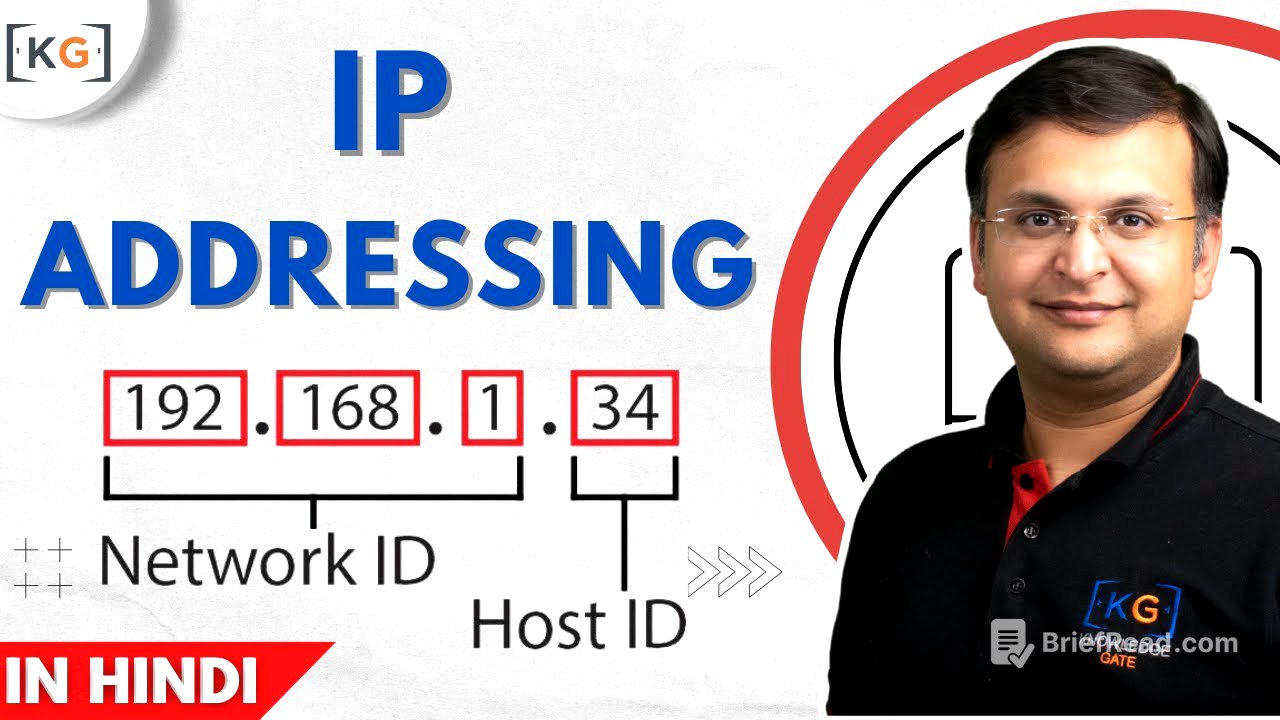TLDR;
This video explains logical addressing and IP addressing, including the differences between IPv4 and IPv6, properties of logical addresses, binary and dotted decimal notations, and classful addressing (Classes A, B, C, D, and E). It covers key concepts relevant to university exams, placements, and competitive exams like GATE and NET.
- Logical vs. IP Address
- IPv4 vs. IPv6
- Unique and Universal Properties
- Binary vs. Dotted Decimal Notation
- Classful Addressing (A, B, C, D, E)
Logical vs. IP Address [0:00]
The internet uses Internet Protocol (IP) to assign a 32-bit address to every device connected to it, known as a logical or IP address. IP version 4 (IPv4) provides approximately 4.29 billion unique addresses (2^32). However, with the increasing number of devices per person, IPv4 is becoming insufficient. To address this, IP version 6 (IPv6) was introduced, using 128-bit addresses, which allows for 3.4 x 10^38 addresses, solving the address exhaustion problem.
Unique and Universal Properties [3:43]
IP addresses have two key properties: uniqueness and universality. Uniqueness means each device on the internet has a distinct IP address, ensuring that each device can be uniquely identified. Universality means that all devices connecting to the internet must have an IP address, making it a universally accepted identifier, similar to a passport for international travel. An IP address is associated with a connection rather than a specific device and can change over time.
Binary vs. Dotted Decimal Notation [6:42]
IP addresses can be represented in two notations: binary and dotted decimal. Binary notation involves writing the 32-bit address as a series of 0s and 1s, which is difficult for humans to work with. Dotted decimal notation divides the 32 bits into four 8-bit sections (octets), converting each octet into its decimal equivalent, and separating them with dots (e.g., 172.16.254.1). Dotted decimal notation is more human-readable and commonly used.
Classful Addressing [8:33]
Classful addressing divides an IP address into two parts: the network ID (prefix) and the host ID (suffix). The network ID indicates which network a device belongs to, while the host ID specifies the particular device within that network. The internet's creators initially standardized network sizes, categorizing them into Class A (large networks), Class B (mid-sized networks), and Class C (small networks).
Classes A, B, C, D, and E [11:58]
In classful addressing, the first few bits of an IP address determine its class. Class A addresses have the first bit set to 0, with an 8-bit network ID and a 24-bit host ID, accommodating approximately 128 networks and over 16 million hosts each. Class B addresses start with '10', using a 16-bit network ID and a 16-bit host ID. Class C addresses begin with '110', featuring a 24-bit network ID and an 8-bit host ID, allowing for numerous small networks with up to 256 hosts each. Class D is used for multicasting, and Class E is reserved for future use. Classful addressing is now outdated, replaced by techniques like CIDR (Classless Inter-Domain Routing).
